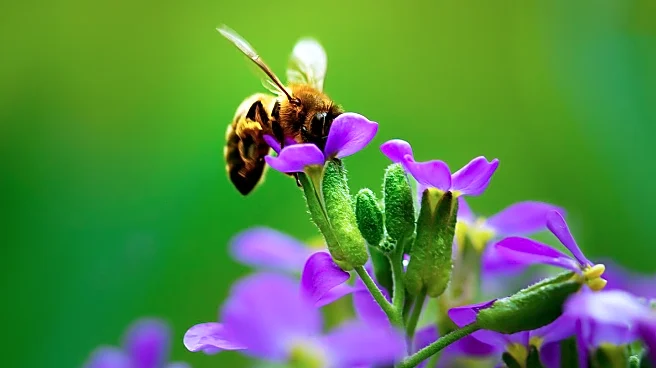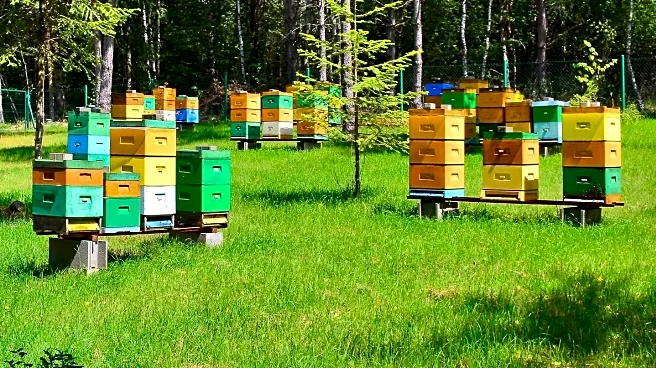What's Happening?
Researchers at the University of British Columbia have discovered that common viruses can lead to the replacement of queen bees in colonies, a process known as supersedure. This occurs when worker bees detect
a decline in the queen's egg production and pheromone levels, specifically methyl oleate, which signals her health status. The study, published in PNAS, highlights how viral infections cause the queen's ovaries to shrink, reducing her ability to lay eggs and produce essential pheromones. This triggers the worker bees to raise a new queen, impacting colony strength and pollination. The research also suggests that synthetic pheromone blends could help stabilize hives by preventing premature queen replacement.
Why It's Important?
The health of queen bees is crucial for global food security, as bees pollinate approximately one-third of the world's crops. The study's findings point to viral infections as a significant factor in queen failure, which has been a growing concern for beekeepers. Poor queen health leads to early supersedure, disrupting colony function and reducing productivity. By understanding the role of viruses and pheromone communication, beekeepers can develop strategies to maintain healthy colonies, potentially using synthetic pheromones to prevent costly disruptions during peak pollination periods.
What's Next?
The research suggests that beekeepers could use synthetic pheromone blends to stabilize hives, particularly during critical pollination or honey production times. Additionally, the study emphasizes the need for better management of varroa mites, which spread viruses affecting queen health. Future efforts may focus on controlling these parasites to reduce viral infections and improve queen longevity. Researchers hope these findings will lead to improved beekeeping practices and heightened awareness of the importance of queen health in maintaining productive colonies.
Beyond the Headlines
The study highlights the complex interplay between viral infections, pheromone signaling, and colony dynamics. It underscores the need for integrated pest management strategies to control varroa mites and other threats to bee health. The findings also raise ethical considerations regarding the use of synthetic pheromones in natural ecosystems and the long-term implications for bee populations and biodiversity. As beekeepers adopt new practices, ongoing research will be essential to balance productivity with ecological sustainability.












